Abstract
Specialized biomedical literatures have been found that are implicitly linked by arguments that they respectively contain, but which nonetheless do not cite or refer to each other. The combined arguments lead to new inferences and conclusions that cannot be drawn from the separate literatures. One such analysis identified one set of articles showing that dietary fish oils lead to certain blood and vascular changes, and a second set containing evidence that similar changes might benefit patients with Raynaud's syndrome. Yet these two literatures had no articles in common and had never before been cited together; neither literature mentioned the other or suggested that dietary fish oil might benefit Raynaud patients. Two years after publication of that analysis, the first clinical trial demonstrating such a beneficial effect was reported independently by others. A second example of literature synthesis, based on eleven indirect connections, led to an inference that magnesium deficiency might be a causal factor in migraine headache. A third example calls attention to implicit connections between arginine intake and blood levels of somatomedins, a potentially fruitful but neglected area of research with implications for the decline with age of thymic function and protein synthesis. A model and an online search strategy to aid in identifying other logically related noninteractive literatures is described. Such structures are probably not rare and may provide the foundation for a literature-based approach to scientific discovery.
Full text
PDF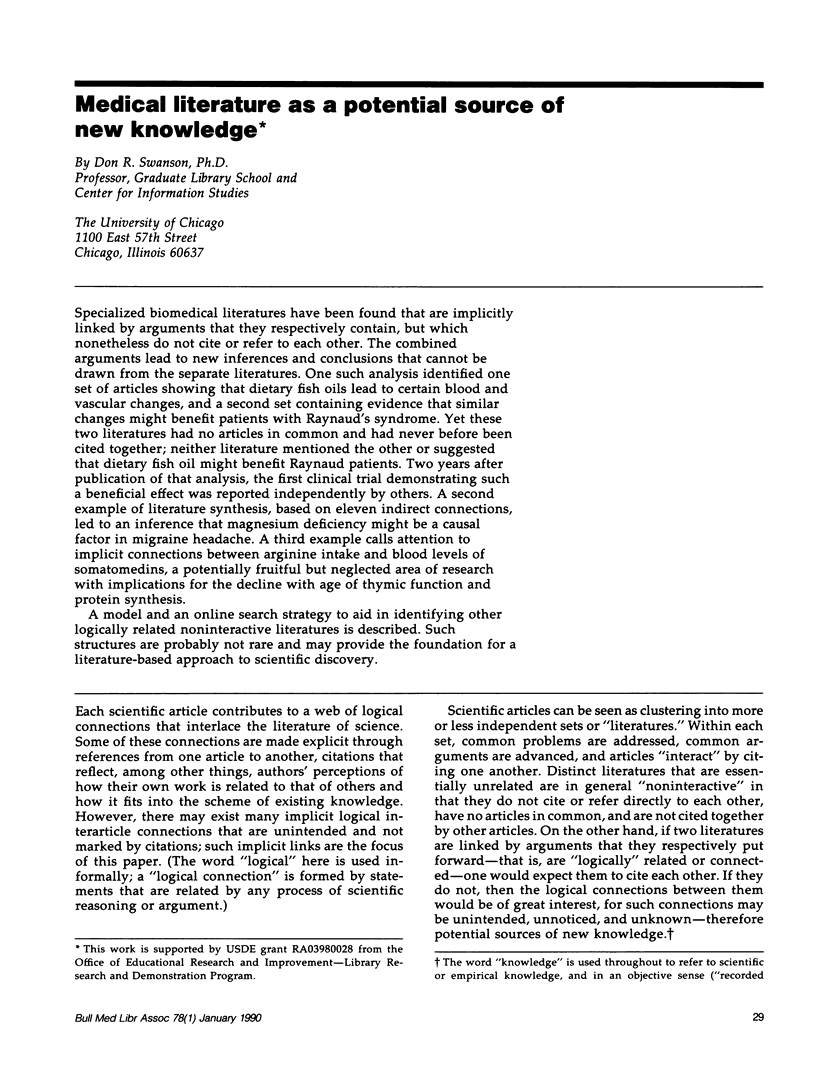
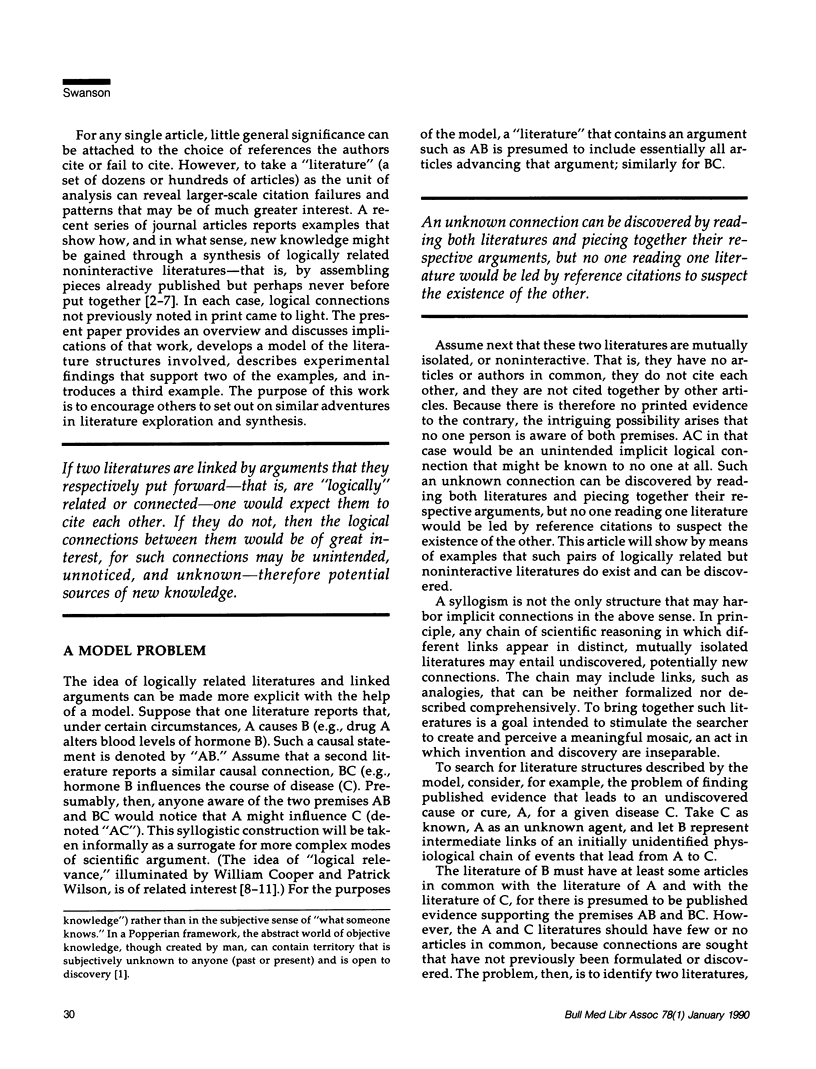
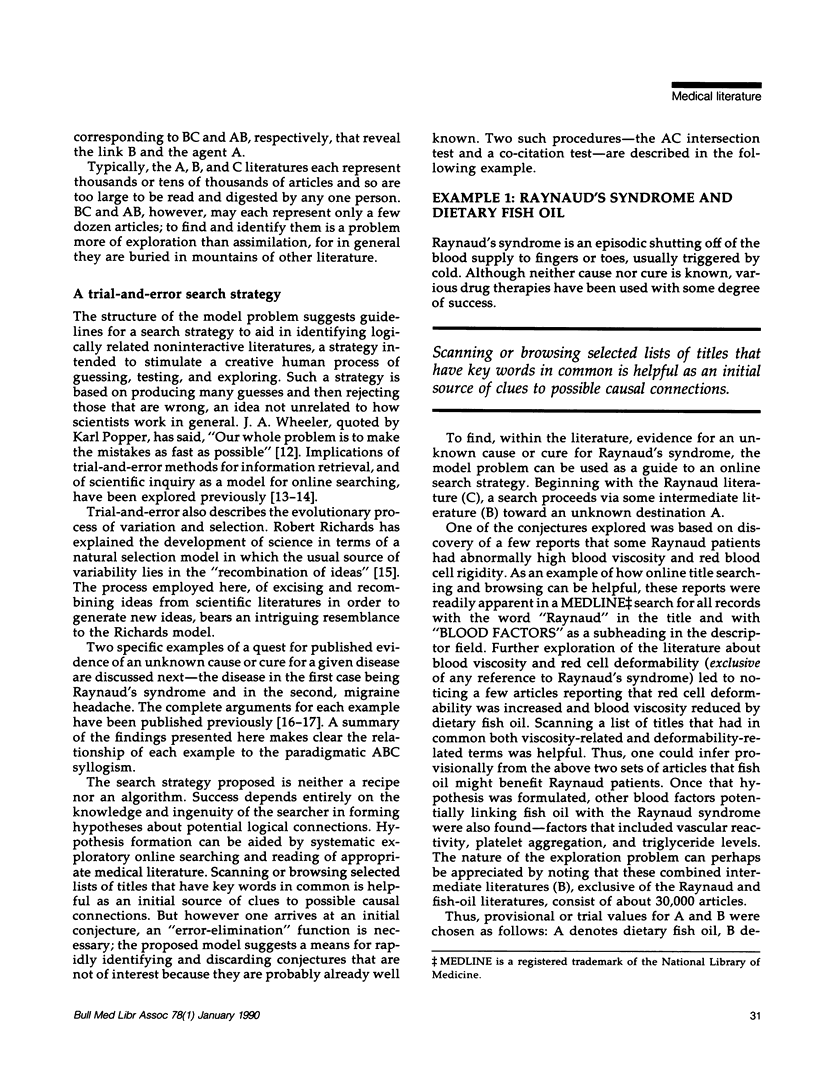
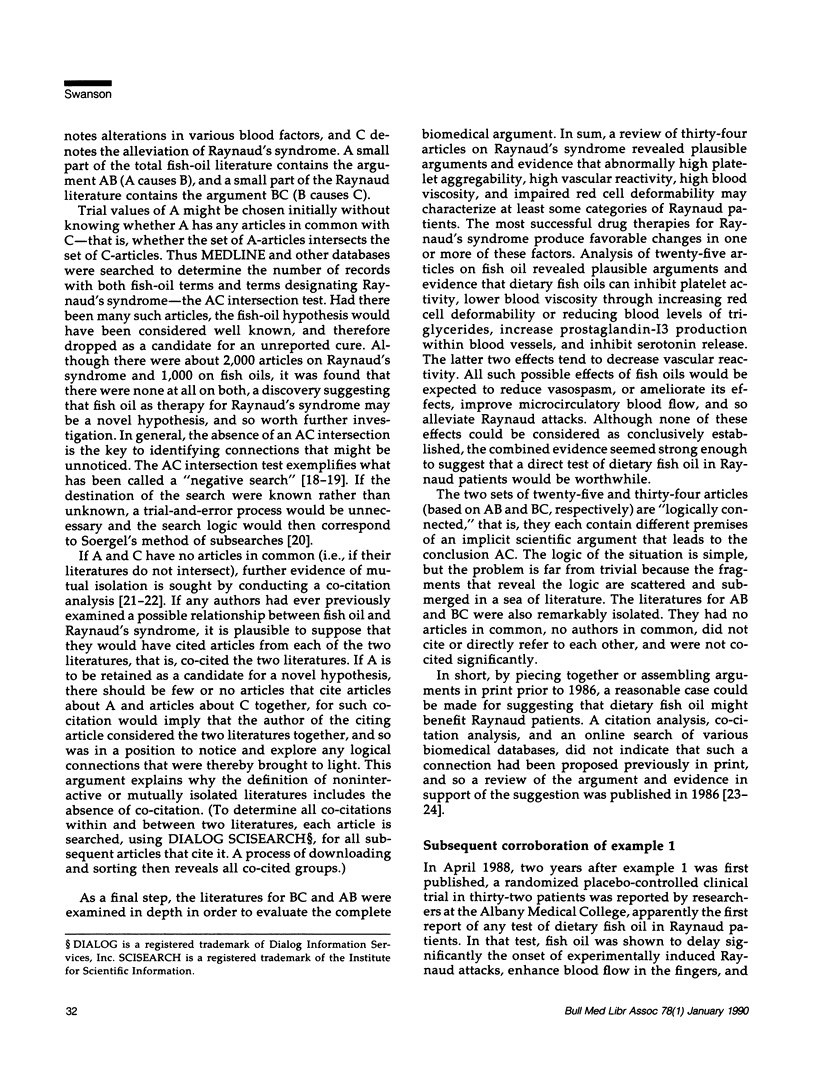
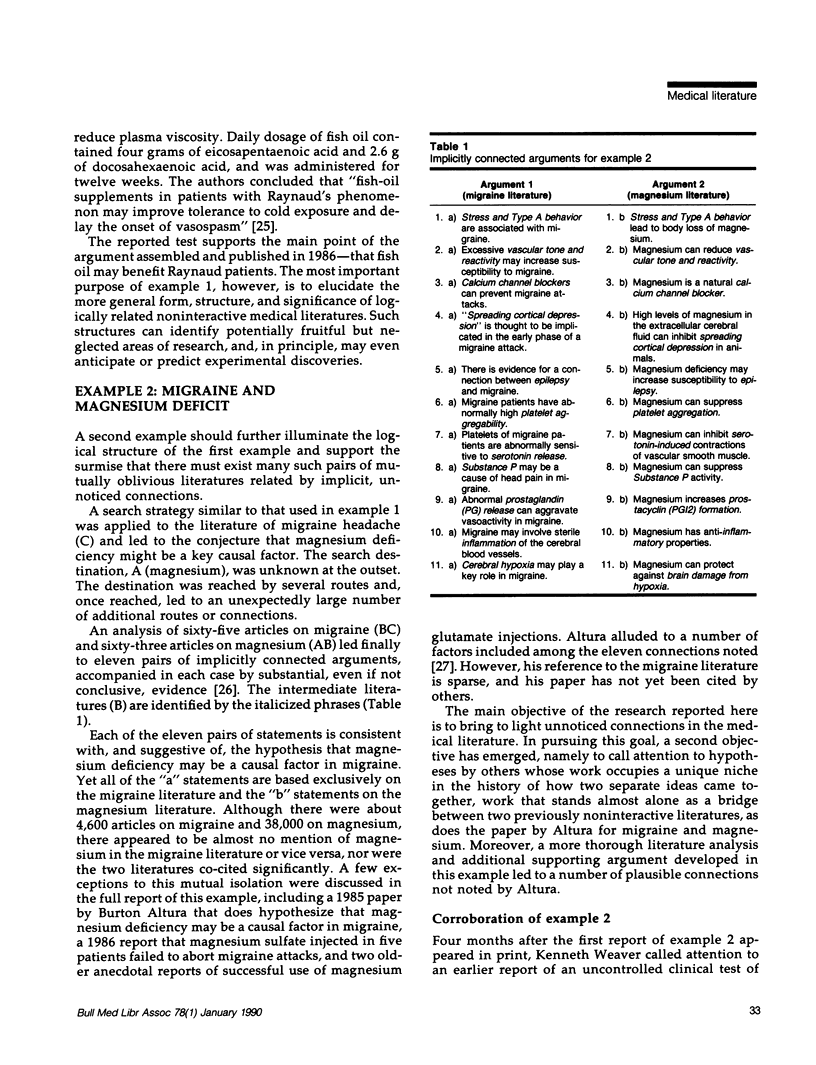
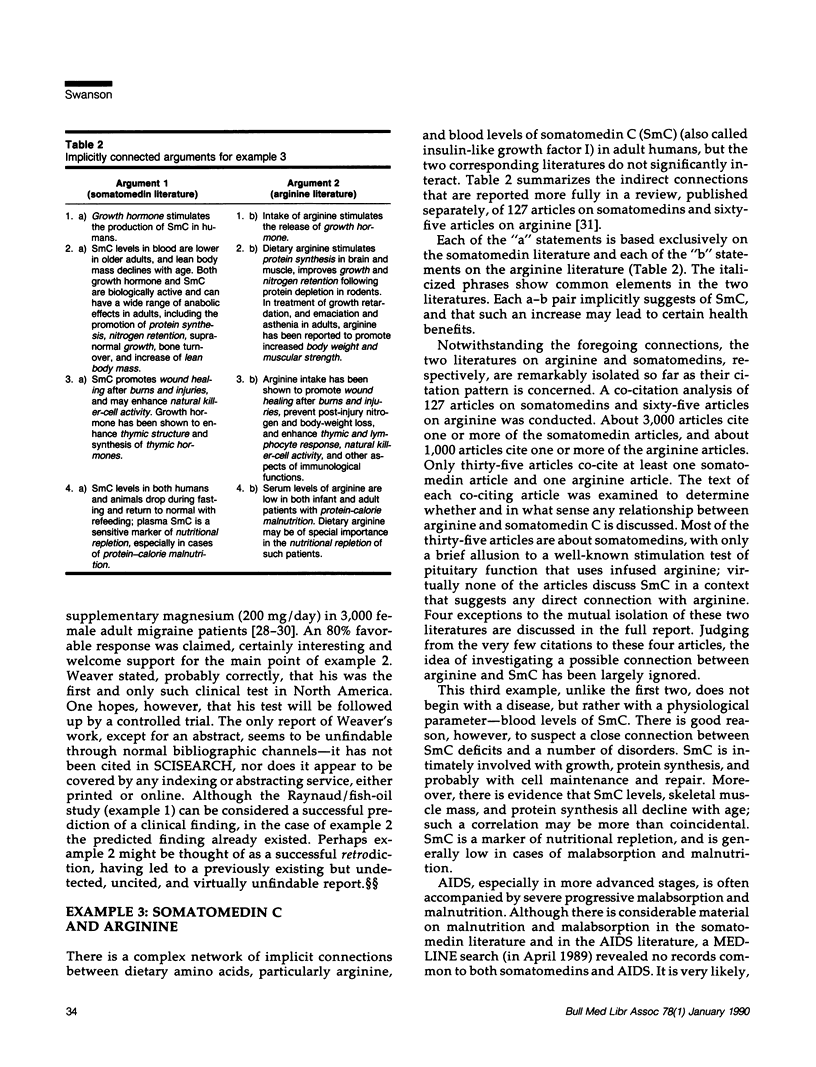
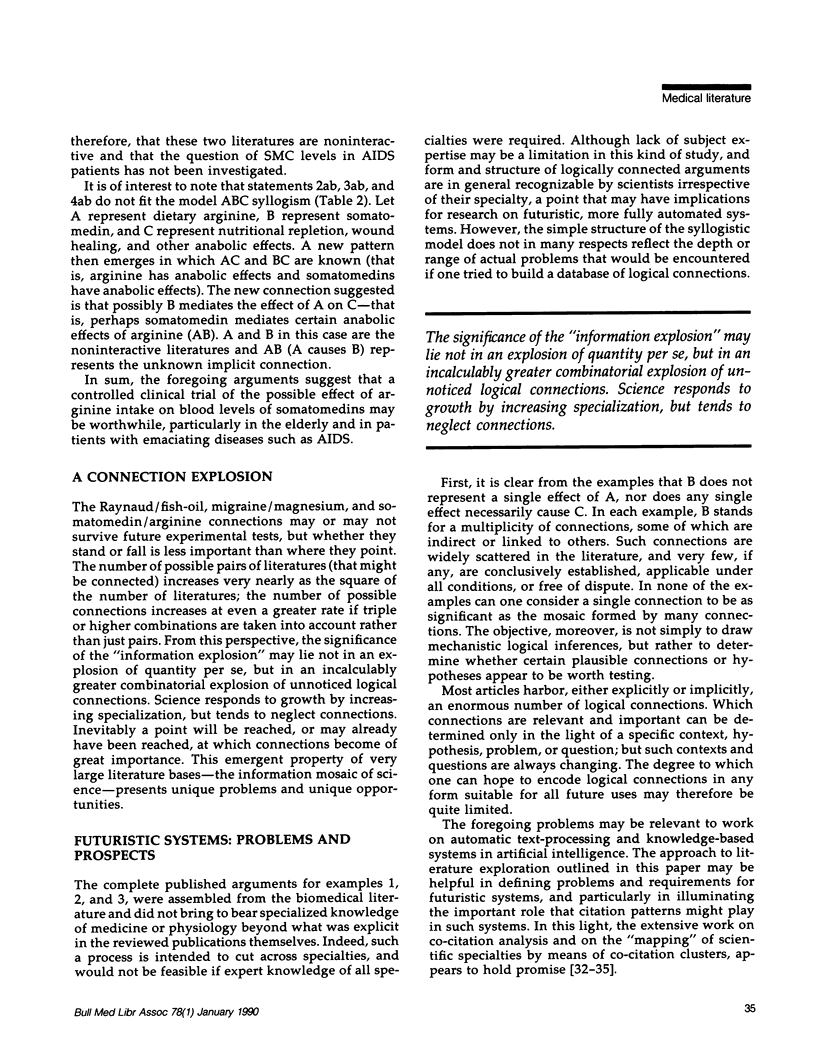
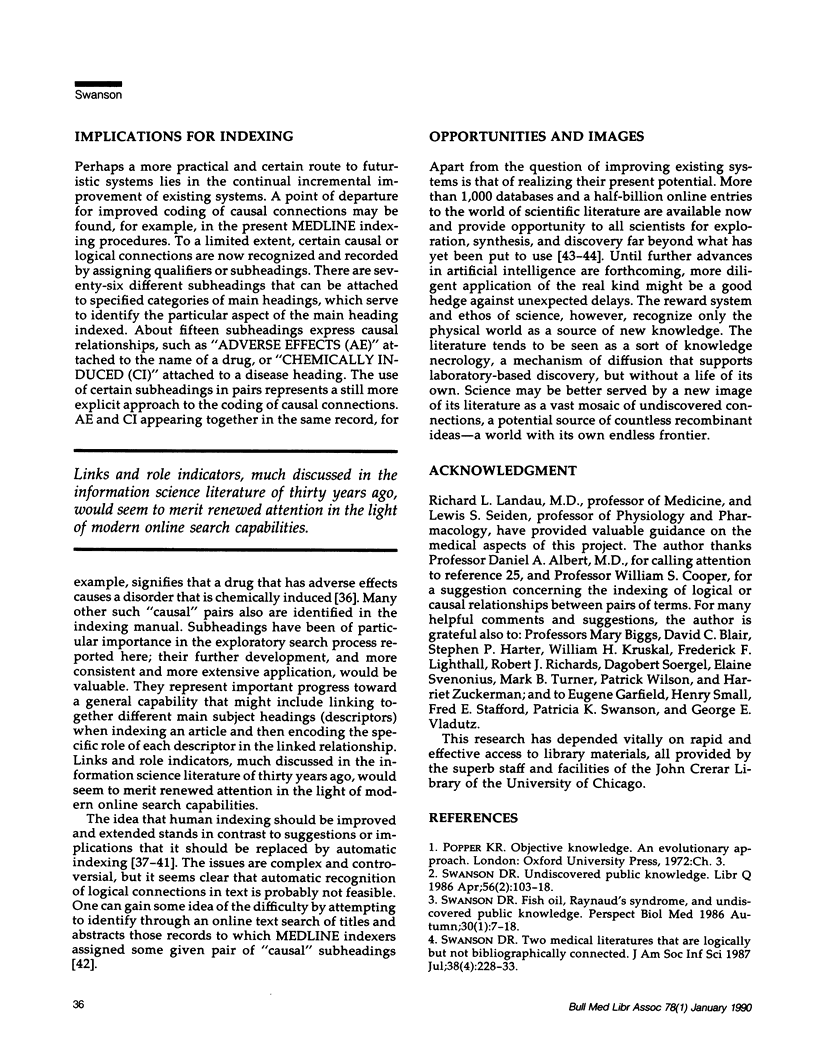
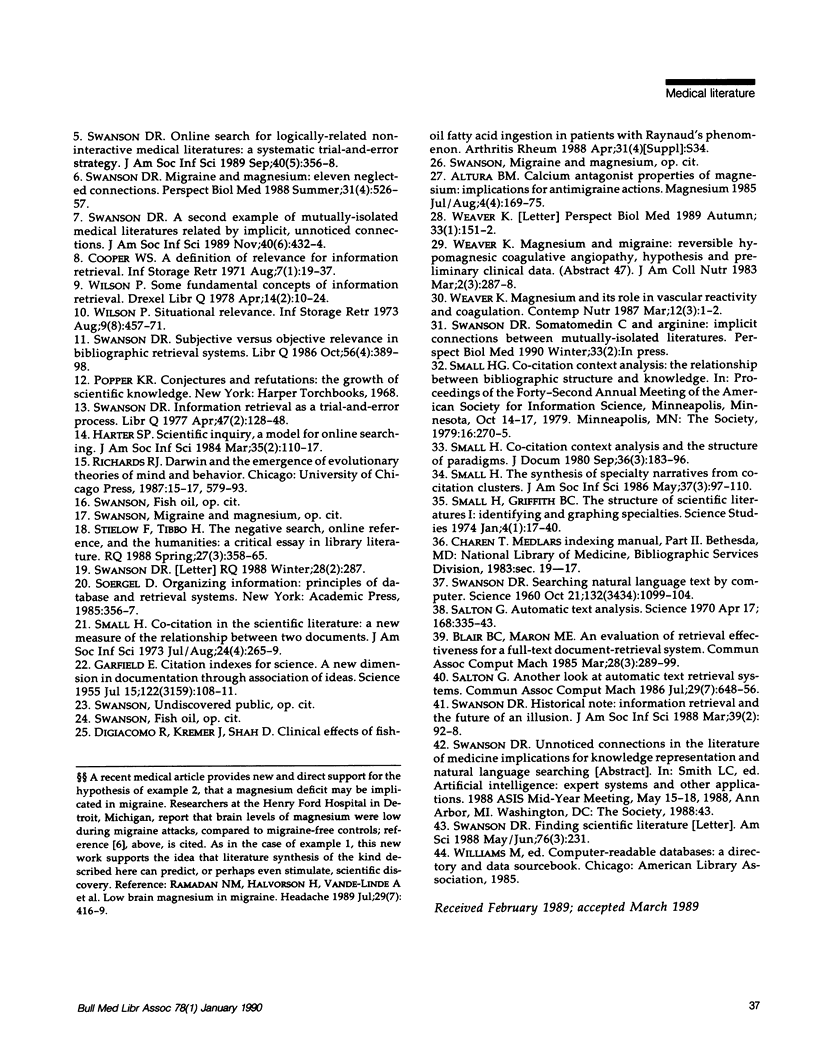
Selected References
These references are in PubMed. This may not be the complete list of references from this article.
- Altura B. M. Calcium antagonist properties of magnesium: implications for antimigraine actions. Magnesium. 1985;4(4):169–175. [PubMed] [Google Scholar]
- GARFIELD E. Citation indexes for science; a new dimension in documentation through association of ideas. Science. 1955 Jul 15;122(3159):108–111. doi: 10.1126/science.122.3159.108. [DOI] [PubMed] [Google Scholar]
- Ramadan N. M., Halvorson H., Vande-Linde A., Levine S. R., Helpern J. A., Welch K. M. Low brain magnesium in migraine. Headache. 1989 Jul;29(7):416–419. doi: 10.1111/j.1526-4610.1989.hed2907416.x. [DOI] [PubMed] [Google Scholar]
- SWANSON D. R. Searching natural language text by computer. Machine indexing and text searching offer an approach to the basic problems of library automation. Science. 1960 Oct 21;132(3434):1099–1104. doi: 10.1126/science.132.3434.1099. [DOI] [PubMed] [Google Scholar]
- Salton G. Automatic text analysis. Science. 1970 Apr 17;168(3929):335–343. doi: 10.1126/science.168.3929.335. [DOI] [PubMed] [Google Scholar]
- Swanson D. R. A second example of mutually isolated medical literatures related by implicit, unnoticed connections. J Am Soc Inf Sci. 1989 Nov;40(6):432–435. doi: 10.1002/(SICI)1097-4571(198911)40:6<432::AID-ASI5>3.0.CO;2-#. [DOI] [PubMed] [Google Scholar]
- Swanson D. R. Fish oil, Raynaud's syndrome, and undiscovered public knowledge. Perspect Biol Med. 1986 Autumn;30(1):7–18. doi: 10.1353/pbm.1986.0087. [DOI] [PubMed] [Google Scholar]
- Swanson D. R. Migraine and magnesium: eleven neglected connections. Perspect Biol Med. 1988 Summer;31(4):526–557. doi: 10.1353/pbm.1988.0009. [DOI] [PubMed] [Google Scholar]
- Swanson D. R. Online search for logically-related noninteractive medical literatures: a systematic trial-and-error strategy. J Am Soc Inf Sci. 1989 Sep;40(5):356–358. doi: 10.1002/(SICI)1097-4571(198909)40:5<356::AID-ASI9>3.0.CO;2-B. [DOI] [PubMed] [Google Scholar]


